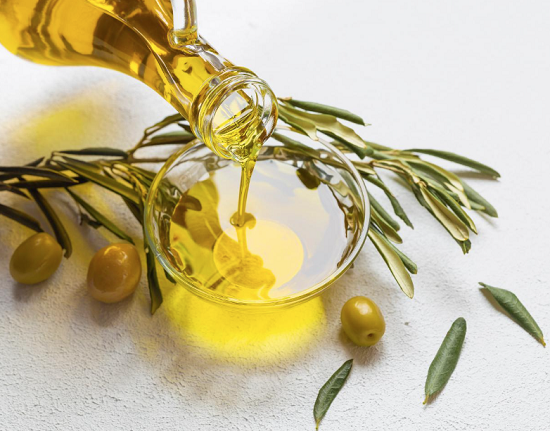Hydroxytyrosol: Source and Benefits
Introduction
There are over 30 different types of phenolic compounds present in olive oil, with hydroxytyrosol (htyr), tyrosol (tyr), and oleocanthal (ole) being present in the highest concentrations. Oleo is the primary phenolic compound found in olive fruit, constituting up to 14% of dried fruit, while htyr is the principal phenolic component in EVOO. The phenolic compounds in EVOO are renowned for their antioxidant properties, as they function as chain breakers by donating hydrogen radicals to peroxyl radicals produced by lipid oxidation. In this respect, several studies have highlighted the antioxidant activity of htyr, tyr, and ole. Bender et al. observed a reduction in lipoxidation reactions in the blood of individuals after ingestion of a single dose of htyr-rich food supplements.
Source

Hydroxytyrosol, 2-(3,4-dihydroxyphenyl)-ethanol (HOTYR), is a phenolic compound present in the fruit and leaf of the olive (Olea europaea L.), which belongs to the family Oleaceae, comprising species distributed throughout the temperate regions of the world, and essentially localized in the Mediterranean basin. Hydroxytyrosol is one of the main components of virgin olive oil, olive mill wastewater (OMWW), and olive leaf extract (OLE), early identified as the strongest in vitro antioxidant potential among all the olive oil polyphenols. As mentioned above, the content of this compound is largely dependent on the oil quality. Amounts range from 14 mg/kg of extra virgin olive oil to <2 mg/kg. Other estimations increased the estimation of the total phenolic content of olive oil in ranges from 487.5 to 1950 mg/l, and HOTYR, specifically from 20 to 84 mg/l. Hydroxytyrosol in oil is found free, in acetate form, or as a part of more complex compounds like oleacein, oleuropein, and verbascoside. Oleuropein is responsible for the bitter taste of olives and decreases as the fruit ripens, turning into an unglycosylated form, oleuropein aglycone by enzymatic hydrolysis, and finally converted into hydroxytyrosol, being an indicator of maturation of the olives.
Benefits
Hydroxytyrosol (htyr) can be extracted from olive leaves and oil, is stable in the free form and penetrates readily into tissues. The chemical formula is C8H10O3 and is identical to tyrosol except for an extra hydroxyl group in meta-position in the aromatic ring. Htyr is derived from the hydrolysis of oleuropein during the maturation of olives. It is soluble in lipids but is also slightly soluble in water. It can exist as a simple phenol or as acetate or secoiridoid derivatives.
Htyr has anti-inflammatory, anti-atherogenic, and anti-thrombotic properties. In vitro studies show that, besides its antioxidant activity, Htyr can improve endothelial dysfunction, lipid profiles, and hemostatic profiles, and it has anti-inflammatory properties. It may, therefore, be considered a neuroprotective, cardioprotective, and chemopreventive agent. Htyr may interact with proteins involved in the control of the cell cycle and gene expression and could, therefore, have anti-cancer properties.
For skincare
Hydroxytyrosol distinguishes itself not only through its antioxidant capacity but also in its defense against blue light-induced skin damage. As we navigate an era dominated by screens, hydroxytyrosol's role in protecting against oxidative stress and hyperpigmentation caused by high-energy visible (HEV) light is more relevant than ever! Incorporating hydroxytyrosol through serums or creams is an effective way to achieve healthier skin. Key benefits include:
Improved Skin Elasticity: Enhances firmness, diminishing aging signs.
Brighter Skin Tone: Addresses hyperpigmentation for a clearer, more even tone.
Boosted Defense: Strengthens the skin's ability to resist environmental damage, maintaining vitality and appearance.
References:
[1] ANABEL GONZáLEZ-ACEDO. The Benefits of Olive Oil for Skin Health: Study on the Effect of Hydroxytyrosol, Tyrosol, and Oleocanthal on Human Fibroblasts.[J]. Nutrients, 2023, 15 9. DOI:10.3390/nu15092077.[2] CRISTINA VILAPLANA-PéREZ. Hydroxytyrosol and potential uses in cardiovascular diseases, cancer, and AIDS.[J]. Frontiers in Nutrition, 2014, 1. DOI:10.3389/fnut.2014.00018.
You may like
Related articles And Qustion
See also
Lastest Price from Hydroxytyrosol manufacturers

US $1200.00-1100.00/ton2025-10-12
- CAS:
- 10597-60-1
- Min. Order:
- 1ton
- Purity:
- 99%
- Supply Ability:
- 1000T/M

US $0.00-0.00/kg2025-09-08
- CAS:
- 10597-60-1
- Min. Order:
- 1kg
- Purity:
- 98%
- Supply Ability:
- 1





